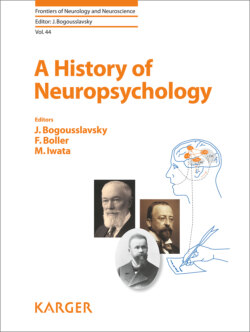Читать книгу A History of Neuropsychology - Группа авторов - Страница 63
На сайте Литреса книга снята с продажи.
Gogi Aphasia and Semantic Dementia
ОглавлениеIn 1989, Snowden et al. [24] reported three cases of “semantic dementia,” characterized by progressive breakdown in language and visual perception. All three showed loss of symbolic meaning affecting both verbal and non-verbal domains. All suffered from progressive lobar degeneration limited to bilateral anterior temporal lobes (temporal lobe type of Pick’s disease in older terminology). The linguistic part of the syndrome is characterized by impaired comprehension and naming, but with well articulated speech with normal syntax and preserved repetition [24]. Based on experiences of 5 cases, Hodges et al. [25] further elaborated the nature of this “semantic dementia” as characterized by fluent dysphasia with severe anomia, reduced vocabulary, and prominent impairment of single-word comprehension. Of course, the concept of “semantic dementia” implies combined deterioration of linguistic meaning such as words and non-linguistic meaning such as faces, the linguistic part of the clinical picture corresponds with Gogi aphasia [26, 27].
Preferred occurrence of single-word meaning loss by damage of the left temporal lobe at a certain stage of progressive lobar degeneration suggests that a yet to be identified region or regions in the lobe occupies a pivotal part of a distributed neural network responsible for such a complex cognitive experience as “meaning” of a word.
